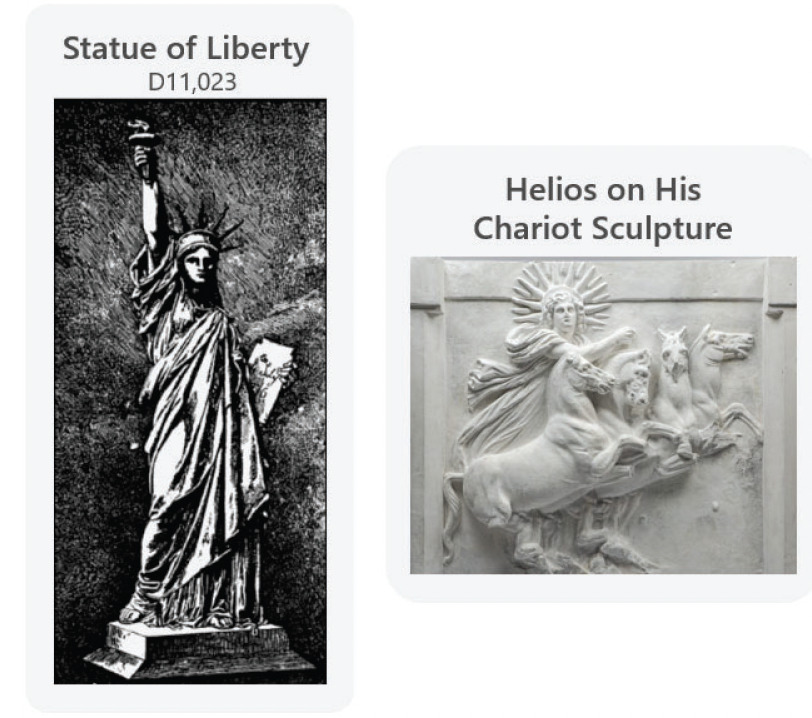Amici for IP and Auto Industries Tell Full CAFC to Stick with What Works on Design Patents
“Once again, the aftermarket auto parts industry, supported by insurance companies that profit alongside them, seeks a sea change in design patent law that would allow it to evade design patent rights with impunity.” – Brief of Hyundai Motor Company
Late last week, more than half a dozen amicus briefs were filed in support of GM Global Technology Operations in a case that is set to potentially shake up design patent law. The latest briefs generally urged the en banc U.S. Court of Appeals for the Federal Circuit (CAFC) to keep the law as is in order to avoid major disruptions.
In June of this year, the CAFC granted a rare en banc review of its January, 2023, decision in LKQ Corporation v. GM Global Technology Operations, which affirmed a Patent Trial and Appeal Board (PTAB) ruling that LKQ failed to show by a preponderance of the evidence that GM’s design patent was anticipated or would have been obvious.
The CAFC opinion explained that “applying the tests established in Rosen and Durling, the Board found that LKQ failed to identify a sufficient primary reference, and therefore failed to prove obviousness by a preponderance of the evidence.” The court agreed with the PTAB and further opined that “[w]e, as a panel, cannot overrule Rosen or Durling without a clear directive from the Supreme Court.” But in June, the court granted en banc review.
The so-called Rosen-Durling test requires that, first, under In re Rosen (C.C.P.A., 1982), courts identify a prior art reference “the design characteristics of which are basically the same as the claimed design.” Next, under Durling v. Spectrum Furniture Co., 101 F.3d 100, 103 (Fed. Cir., 1996)), if such a reference is identified, the court consider whether it can be modified based on other references to come up with “the same overall visual appearance as the claimed design.”
LKQ argued in its petition for en banc rehearing in March that the CAFC and its predecessor court have been applying a “rigid approach” to determining obviousness of design patents for 40 years, and that the Supreme Court’s 2007 holding in KSR International v. Teleflex, Inc. expressly overruled such an approach.
In August, 10 amici weighed in supporting either LKQ Corporation or neither party. Six of the briefs were filed by the automotive repair and insurance industries and broadly called for eliminating the Rosen-Durling test altogether. The brief filed by the United States suggested substantially retaining the Rosen-Durling framework, but clarifying the framework to replace “Rosen’s ‘basically the same’ terminology with language directing the examiner or other factfinder to inquire whether there is a suitable starting point or base reference broadly having a similar overall visual effect as the claimed design.”
Latest Amici: Leave Well Enough Alone
Last week’s briefs, however, mostly warned against making changes to the test. The Intellectual Property Owners Association (IPO) called eliminating or substantially modifying the Rosen-Durling test “undesirable and unnecessary” and said it would create considerable uncertainty for examiners and design patent owners. In the event the court decides to do so, however, IPO suggested turning to Graham v. John Deere Co. of Kansas City, 383 U.S. 1 (1966) as the “high level, foundational framework for assessing the obviousness of all types of inventions covered by the Patent Act,” rather than relying on KSR. With the “appropriate design-oriented focus, the Graham rubric, as informed by Whitman Saddle and subsequent appellate cases that formed the basis for Rosen-Durling, would be a workable, though less predictable, alternative framework for determining obviousness of design patent claims…,” added the brief.
The International Trademark Association (INTA) in its brief focused on Question 3(E) posed by the CAFC, which asks “Given the length of time in which the Rosen-Durling test has been applied, would eliminating or modifying the design patent obviousness test cause uncertainty in an otherwise settled area of the law?”
INTA said the answer to this is plainly yes, and that substantially modifying or eliminating the existing test would not only create uncertainty in design patent law, but also would “upset the carefully crafted, long-established balance between design patent and trade dress protection, to the detriment of both intellectual property owners and consumers alike.”
Apple, Inc.’s brief said, “there is no reason to abandon the Rosen-Durling framework, on which design-focused industries have relied for decades.” Apple focused in particular on the compromise solution the U.S. government outlined in its amicus brief, which the company said “introduces significant risk of hindsight bias.” Apple included several examples of how it believes the government’s approach could go wrong, including one that claimed a patent challenger could have relied on a prior art Greek sculpture of Helios to invalidate the design patent on the Statue of Liberty under the government’s approach “by arguing that it is a proper starting point because it ‘broadly ha[s] a similar overall visual effect’ as the Statue of Liberty.”
Hyundai Motor Company and Kia Corporation filed a more accusatory brief. The amici said that the petition “is part of a larger, deliberate campaign by an aftermarket parts industry that is openly hostile to auto manufacturers’ design patent rights.” The brief continues:
“Once again, the aftermarket auto parts industry, supported by insurance companies that profit alongside them, seeks a sea change in design patent law that would allow it to evade design patent rights with impunity.”
Chris Carani of McAndrews Held & Malloy, who wrote the AIPLA brief supporting neither party, said, “the gist of the new briefs is ‘if it ain’t broke, don’t fix it.’”
Carani noted that the latest round of briefs represent a “much wider spectrum” that encompasses major IP associations, designers, and design-focused companies.
Furthermore, the approach of the most recent briefs “is largely consistent with the positions of the U.S. Solicitor’s Office and AIPLA, which both filed in support of neither party, advocating for keeping the current system but with some clarifications,” said Carani.
This could perhaps indicate to the court that there is more support for a tempered or status quo approach than an overhaul.
Below are links to the additional briefs filed last week not discussed above:
Ford Motor Company
Alliance for Automotive Innovation and Rivian Automotive, Inc.
Industrial Designers Society of America
Image Source: Deposit Photos
Author: gstockstudio
Image ID: 57216291







